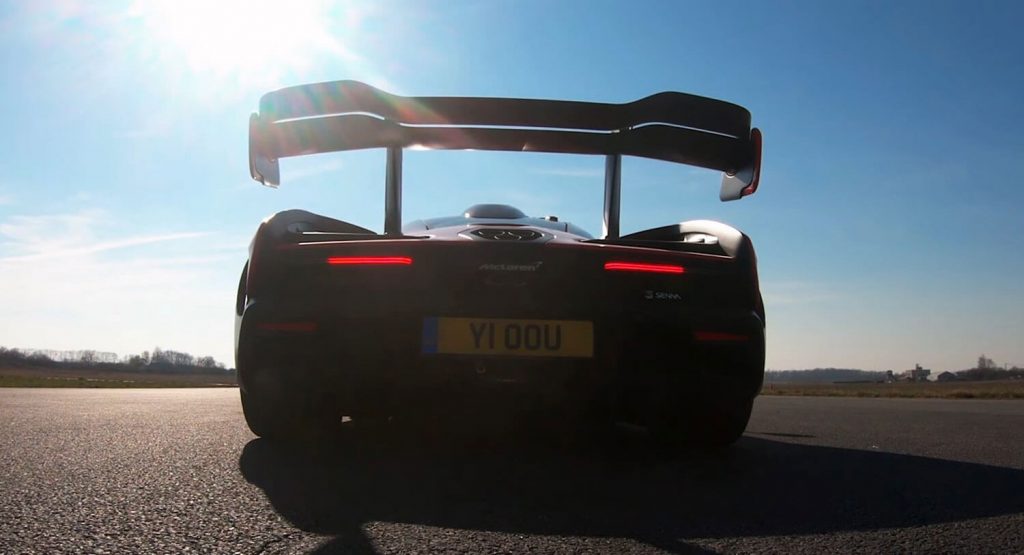The Senna caused quite a ruckus when it was launched, mainly because it’s named after the late Ayrton Senna, and pundits reasoned that a supercar named after the most revered F1 driver of all time should be much better looking than that.
Love it or hate it, it’s hard to deny that the Senna one of the most track-focused models on sale today. Its styling adheres strictly to the “form follows function” mantra, and all of those sharp lines and creases are there to improve aerodynamics, with McLaren claiming a whopping 800 kg (1,764 lbs) of downforce at 250 km/h (155 mph).
Also Watch: McLaren 600LT Does A Standing Kilometer Faster Than You Can Name Its Rivals
Despite being less powerful than the P1, McLaren claims that it’s actually faster on any track. It’s also quicker than the P1 GTR, and this shows that the amount of work that went into it is simply staggering. This is made even more evident when you consider that the Senna uses no electrification, just the 4.0-liter twin-turbo V8 engine, which also powers the 720S, tuned to produce 800 PS (789 hp / 589 kW) and 800 Nm (590 lb-ft) of torque.
Naught to 100 km/h (62 mph) takes only 2.8 seconds and it can hit 200 km/h (124 mph) and 300 km/h (186 mph) in 6.8 and 17.5 seconds, respectively. Keep in mind that this is a car that weighs less than 1,200 kg (4,409 lbs) dry.
One of the latest tests that the Senna has been subjected to was a continuous acceleration by MotorsportMagazine. In this case, it hit “only” 295 km/h (195 mph), but that’s because it was unleashed at the Lurcy Levis track, located in central France, and its longest straight simply wasn’t long enough.



